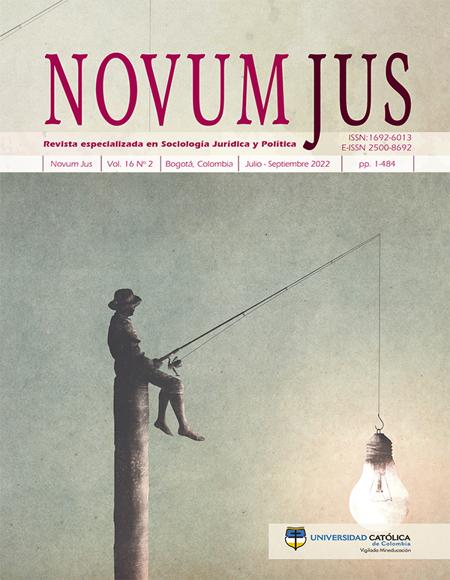
This work is licensed under a Creative Commons Attribution-NonCommercial 4.0 International License.
Authors who publish with this journal agree to the following terms:
- Authors retain copyright and grant the journal right of first publication with the work simultaneously licensed under a Creative Commons Attribution Non-Commercial License that allows others to share the work with an acknowledgement of the work's authorship and initial publication in this journal.
- Authors are able to enter into separate, additional contractual arrangements for the non-exclusive distribution of the journal's published version of the work (e.g., post it to an institutional repository or publish it in a book), with an acknowledgement of its initial publication in this journal.
- Authors are permitted and encouraged to post their work online (e.g., in institutional repositories or on their website) prior to and during the submission process, as it can lead to productive exchanges, as well as earlier and greater citation of published work (See The Effect of Open Access).
Abstract
The Inter-American Court of Human Rights (IACHR), as the body responsible for administering justice to cases arising from the violation of the rights of the States parties, issues sentences in which it declares a State responsible for having violated rights enshrined in the Convention or in other protection instruments and determines how the victim should be repaired. These judgments are intended to compensate the damages caused. To this end, the Court follows up on compliance with the ruling issued. After a period, it studies the progress made and in case of non-compliance, it determines a new term. This paper addresses compliance with the orders issued in IACHR judgements, by analyzing the types of mandates, deadlines, and terms of execution for the responsible States, as well as compliance rates, seeking to present a general balance.

References
Comisión Interamericana de Derechos Humanos. “Situación de derechos humanos en Honduras. OEA/Ser.L/V/II. Doc. 42/15”. https://www.acnur.org/fileadmin/Documentos/BDL/2016/10269.pdf (acceso abril 24, 2021).
Fuenzalida Bascuñán, Sergio. “La jurisprudencia de la Corte Interamericana de Derechos Humanos como fuente de derecho: una revisión de la doctrina del ‘examen deconvencionalidad”. Revista de Derecho (Valdivia) 28, núm. 1 (2015): 171-192, DOI:
http://dx.doi.org/10.4067/S0718-09502015000100008 (acceso marzo 27, 2021).
Organización de los Estados Americanos [OEA]. “¿Qué es la CIDH?”. http://www.oas.org/es/cidh/mandato/que.asp (acceso abril 24, 2021).
Organización de los Estados Americanos [OEA]. Convención americana sobre derechos humanos (Pacto de San José). San José, 22 de noviembre de 1969.
Ovalle Favela, José. “La influencia de la jurisprudencia de la Corte Interamericana de Derechos Humanos en el derecho interno de los Estados latinoamericanos”. Boletín Mexicano de Derecho Comparado 45, núm. 134 (2012): 595-623.
Rivadeneira Stand, Silvio Luis. “Condenas al Estado colombiano por la Corte Interamericana de Derechos Humanos”. Nuevo Derecho 9, núm. 12 (2013): 95-106.
Romero Pérez, Xiomara Lorena. “El reconocimiento parcial de la responsabilidad del Estado colombiano en el Sistema Interamericano de derechos humanos. Casos Mapiripán,Ituango y La Rochela”. Anuario Mexicano de Derecho Internacional 9 (2009): 219-243.




















